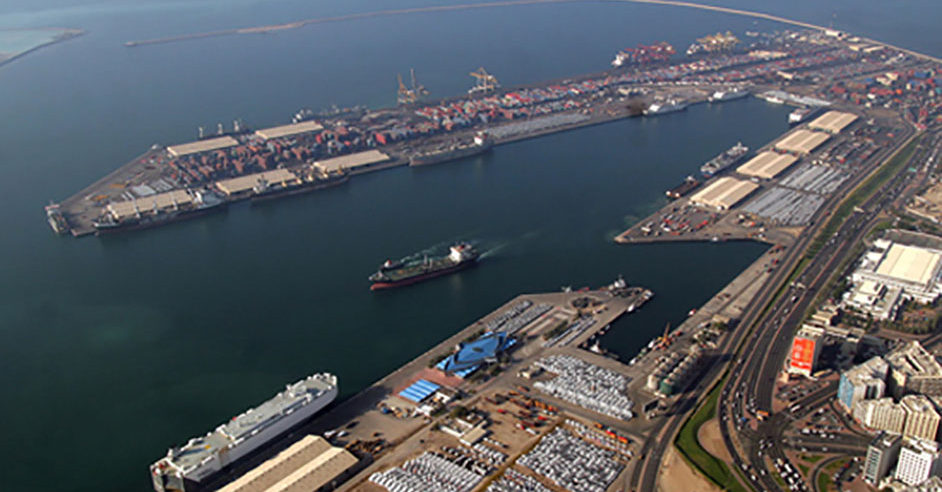Taylor Maritime Limited, the specialist dry bulk shipping company, today announces eleven new vessel sales for gross proceeds of $172.5 million, representing an average 4.0% discount to Fair Market Value. These sales are in addition to the previously announced vessel sale in January of $13.9 million (0.5% discount to 30 September 2024 Fair Market Value) which completed during the quarter.
One vessel sale completed post period with the remaining ten sales expected to complete between now and the end of August 2025.
Total gross proceeds from the 12 sales agreed and completed in the 2025 calendar year to date stands at $186.4 million.
Once all the sales have completed, the Group’s outstanding bank debt is expected to reduce to $4.7 million, saving approximately $12.4 million[2] in interest payments on an annualised basis. This represents a significant reduction in debt of $413 million[3] since the Grindrod acquisition in December 2022.
The vessel sales put the Company on course to zero net bank debt and an owned fleet of 19 Japanese built vessels.
Furthermore, the Company announces that its unaudited NAV as at 31 March 2025 was $1.11 per Ordinary Share compared to $1.28 per Ordinary Share as at 31 December 2024. The NAV decrease for the quarter was primarily attributable to a c.$32 million fair value loss and a c.$20 million combined interim and special dividend payment. The Company is pleased to declare an interim dividend in respect of the period to 31 March 2025 of 2 cents per Ordinary Share.
Commenting on the vessel sales and trading update Edward Buttery, Chief Executive Officer, said:
“Given our cautious view for 2025 amidst geopolitical and trade uncertainty, we have accelerated divestments, capitalising on seasonal improvement in market conditions and positive sentiment relating to Japanese-built vessels to agree the sale of eleven vessels at an average 4.0% discount to Fair Market Value. Proceeds will be used to continue to deleverage toward zero net debt, at pace, while ensuring adequate cash on the balance sheet and maintenance of our regular dividend. Enhanced flexibility facilitated by our transition to a commercial company along with continued focus on operational efficiency and cost reductions will provide further resilience
Key Highlights (to 31 March 2025)
Acceleration of vessel sales
- Anticipating volatility given recent developments in US trade policy, the Company took advantage of seasonal improvements in sentiment to accelerate divestments with eleven new vessel sales announced today and a previously announced sale completed during the quarter
- Total gross proceeds from the 12 completed and agreed vessel sales for the 2025 calendar year now stand at $186.4 million. Overall, there have been 39 agreed and completed vessels sales since the beginning of 2023 at an average of 3.6% discount to Fair Market Value[4], generating total gross proceeds of $630.6 million once agreed sales complete
- The fleet comprised 30[5] Japanese-built vessels at quarter end and will reduce to 19[6] Japanese-built vessels after the announced sales complete with an average age of 9.9 years and average carrying capacity of c.44.5 dwt · The Market Value of the fleet[7] decreased quarter-on-quarter by c.5.3% on a like-for-like basis, to $517.6 million. After softening in January in line with weaker charter market conditions, second-hand asset prices climbed gradually from the end of the Chinese New Year holiday, despite uncertainty caused by a dynamic US trade policy, and remain firmly above their long-term average at the end of the period. Values for second-hand geared dry bulk vessels have so far remained resilient into calendar Q2 with the TML fleet market value drop at the quarter end being attributable to the vessels becoming a year older at the turn of the calendar year
- The fleet generated average time charter equivalent (“TCE”) earnings of $10,252 per day for the quarter (versus $12,150 per day for the quarter ended 31 December 2024) with sentiment-driven freight market weakness from the previous period carrying over into January before spot rates began steadily improving from the end of the Chinese New Year holiday period · Relative to benchmark indices[8], the combined Handysize fleet outperformed by $1,775 per day (c.21%) and the Supra/Ultramax fleet outperformed by $2,258 per day (c.27%)
- The Group’s outstanding debt stood at $250.1 million as at 31 March 2025 (vs $252.0 million as at 31 December 2024) representing a debt-to-gross assets ratio of 38.7% (versus 35.4% at 31 December 2024). This comprises $187.4 million bank debt, $40.3 million relating to leases for four ships and a $22.4 million purchase option which is treated as debt for accounting purposes (note that it is not an obligation and will fall away upon expiry) · All net sales proceeds, plus a portion of existing cash on the balance sheet, will be applied to the repayment of bank debt, which is expected to reduce from $187.4 million at March 2025 to $4.7 million drawn from the existing revolving credit facility (“RCF”), noting that retaining some bank debt as well as undrawn capacity is beneficial for liquidity and future financial flexibility if required. We therefore expect the Group’s outstanding debt to reduce to $47.2 million by September 2025 (including $20.2 million of lease related indebtedness and $22.4 million purchase option), which would represent a debt-to-gross assets ratio of 10.4% (or 5.7% excluding the purchase option) based on Fair Market Values as at end of March 2025
- On 13 January 2025, shareholders approved the transfer of the Company’s ordinary shares listing from the closed-ended investment funds category to the equity shares (commercial companies) category of the Official List (the “Transfer”), along with consequential changes to TML’s Articles of Incorporation and a proposal to change the Company name to “Taylor Maritime Limited” · The Transfer and the consequential changes took effect on 10 February 2025
- On 11 February 2025, Mr. Alexander Slee (Deputy CEO), Ms. Yam Lay Tan (CFO) and Ms. Camilla Pierrepont (Chief Strategy Officer) were appointed as Executive Directors of the Company
- The number of covered fleet ship days remaining for the 2025 financial year stands at 43% at an average TCE rate of $13,117 per day with a portion of the fleet maintained on short charters to provide optionality for further sales
Following the unseasonably weak end to the 2024 calendar year, charter rates remained subdued in January, reaching a low point during Chinese New Year, before rising gradually through to the end of the quarter with US tariff announcements seemingly having a limited direct impact on dry bulk trade.
Second-hand asset values followed a similar trajectory to charter rates over the course of the period yet remained well above historical averages, proving resilient in the face of broader market uncertainty. Lack of clarity concerning proposed levies on US port calls by China-linked vessels did, however, impact liquidity with trading of Chinese-built second-hand vessels slowing during the quarter while Japanese-built ships experienced higher turnover. The US Trade Representative has since clarified that Chinese-built bulker vessels under 80,000 dwt, which encompasses the Handy and Supra/Ultramax segments, are exempt from the new measures.
The direct impact of tariffs on dry bulk trade has so far been limited. However, the US Administration’s announcement of further tariffs in early April and retaliatory measures taken in response, particularly by China, have increased uncertainty and led to concerns over broader macroeconomic deterioration. Should trade frictions escalate and lead to lower industrial activity and global GDP growth, the dry bulk sector could face less demand than previously forecast. Retaliatory tariffs, however, may also result in a rerouting of trade routes with a potentially positive impact on tonne-mile demand.
While short-term demand uncertainty has increased, the medium-term outlook remains positive given supportive supply-side dynamics. Fleet growth is expected to remain modest by historical standards with net supply growth forecasts for the geared dry bulk segment of 4.4% in 2025 according to Clarksons, following several years of limited ordering and newbuilding activity. Meanwhile, a significant portion of the global geared dry bulk fleet continues to approach scrapping age, with 10.5% of the current Handysize fleet and 5.7% of the current Supra/Ultramax fleet reaching 25 years or older in 2025. Relatively firm freight market rates in recent years have led owners to keep older vessels in service, however, with a softer 2025 in play, scrapping activity may accelerate, providing further support to the supply side.
Source: Taylor Maritime Limited




